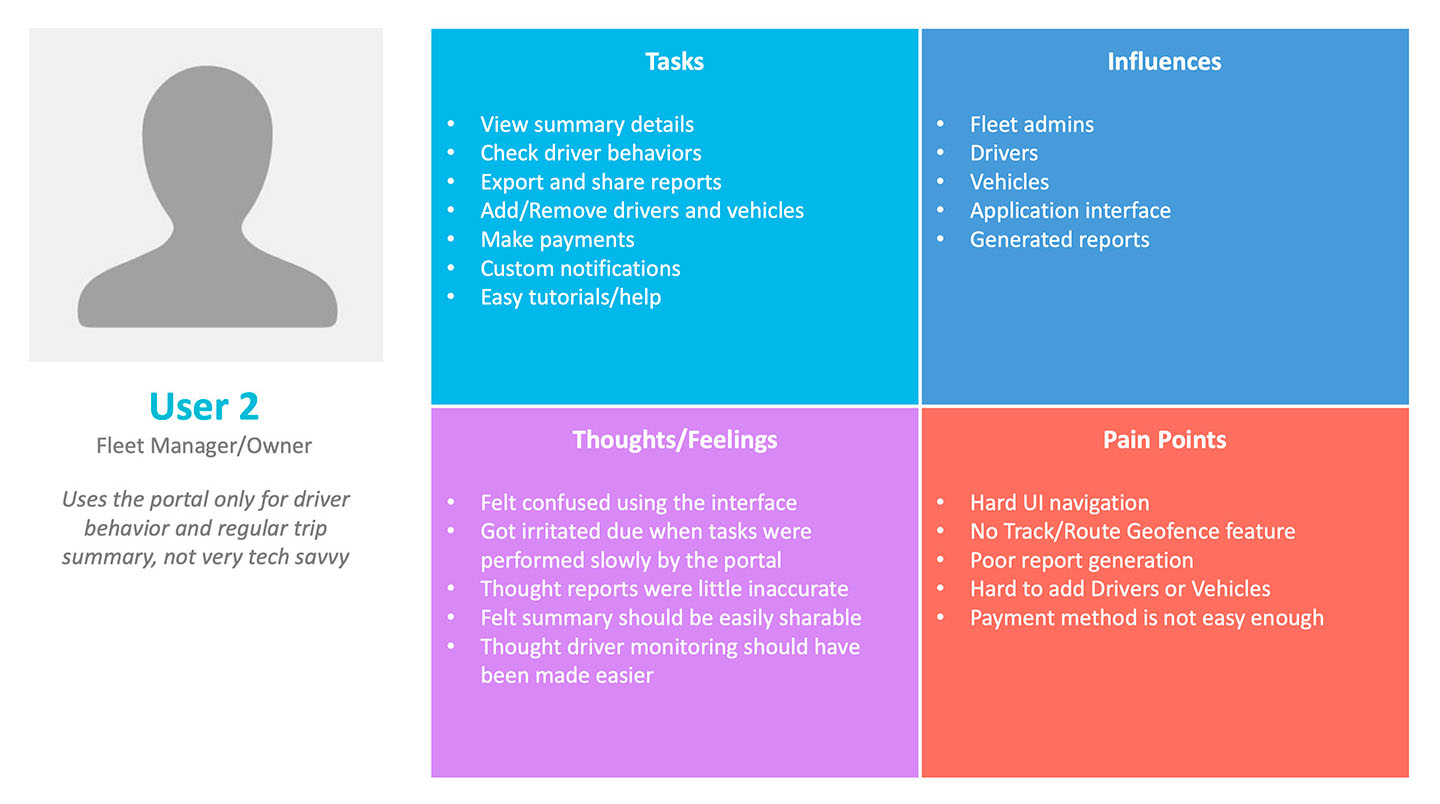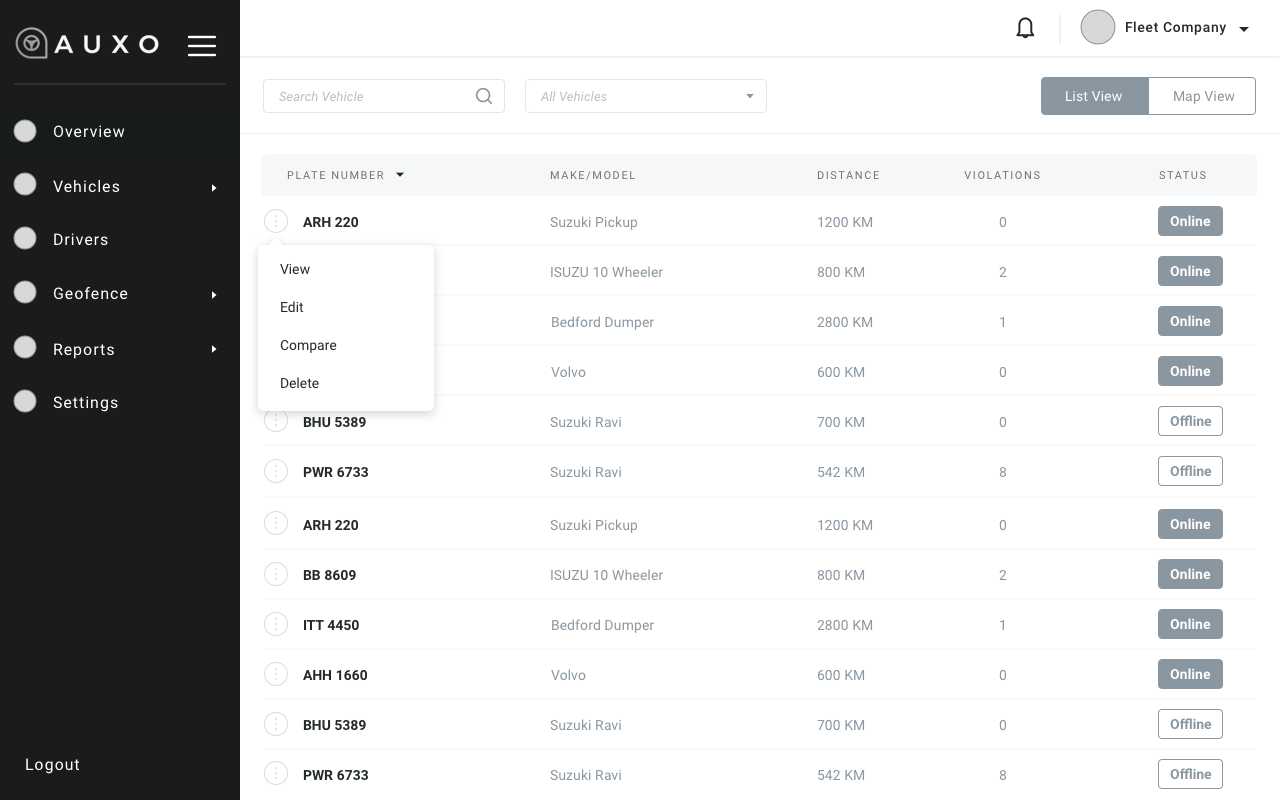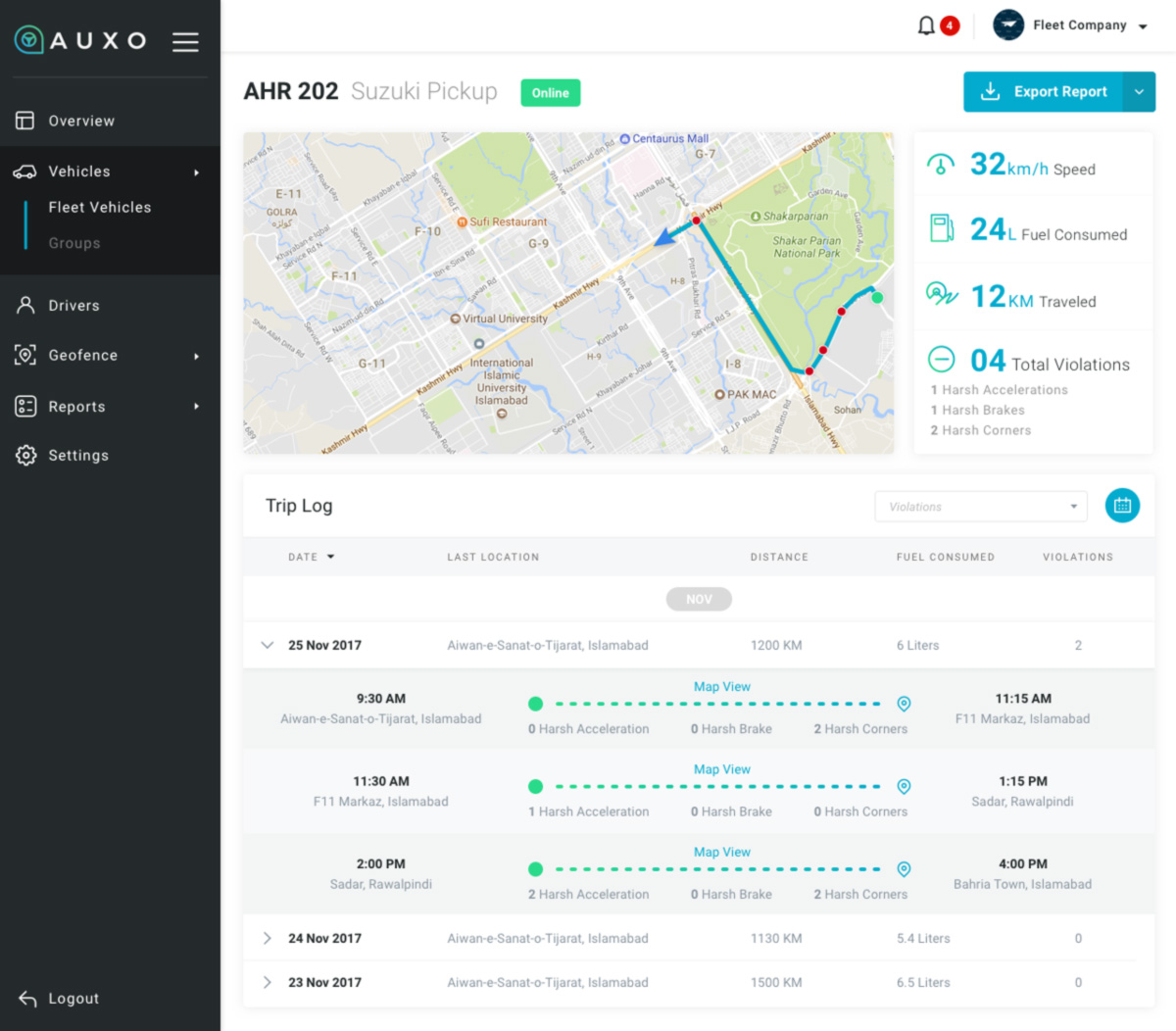AUXO Fleet
User Research | User Interface | Interaction
AUXO Fleet was a continuation of AUXO Project. AUXO Fleet provided fleet management solution to ever growing fleet and cargo transportation companies. It allowed fleet companies to keep track of their vehicles and assets in real time, and gather on route data points to optimize their day to day operations.
Scope
Design a solution that would help Fleet Companies track and maintain their fleets of vehicles along with their cargo or other assets. Platform should provide real time statistics along with analytics to help fleet managers better optimise their operations. Platform should be scalable to accommodate multiple features.
Launch
October 2018
Teams
Design
Development
Product
Business Clients
Company
Telenor
Persona
I always like to start a project by knowing who the target audience is. For this particular project I had to cater for two major personas which we identified after interviewing 12 different Fleet Companies and that was of Fleet Admin and Fleet Manager/Owners. It was important for us to know what demography they fall in and how comfortable they were in adapting new technology. What solutions were they already using and what their day to day tasks look like.


Empathy Map
To understand the pain points of the users it was vital to know about the shortcomings in their existing solutions. For that purpose we did an empathy session where we tried to understand our users needs.


Analysis
After speaking with the clients we went out and analysed different markets both local and international. This exercise was conducted in collaboration with Products and Marketing team, we analysed other top performing solutions and a competitors analysis was carried out as well.
Benchmarks:
We benchmarked 5 fleet management products and services in terms of our direct market competition and 5 as inspiration. This gave us insight into the feature sets that users belonging to this industry are used to and it also helped us analyse how we can improve upon those feature sets.
Features:
Feature sets were brainstormed and defined based on the user feedback and market analysis. Instead of reinventing the wheel and making users adapt a different model. Our goal was to make sure that users mental models were not affected when we were making our feature sets.
Information Architecture:
Information architecture helped me define the navigation through out our platform. It was helpful in defining the construction of user journey. During one of design sprints me and the products team sat together and identified the best way of distributing information through out the platform.
User Journey:
Information architecture helped us define user journeys. In mapping out these journeys I took inspiration from the physical world. We documented both of our personas and tried to mimic their manual practices in a more automated scenario. It gave us the ability to create a very intuitive interface.
Wireframes




High-Fidelity Designs





